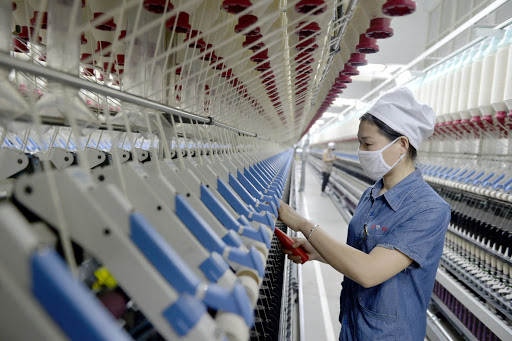September Market Intelligence brief from AWI
This month AWI examines some key data that reflect the global appetite for wool consumption, particularly from China, Australia’s largest customer. With the ongoing global pandemic, the economic position in many key wool consuming countries has been characterised as in a recovery mode but now the highest inflation figures for many years is raising concerns.
The demand for woollen and worsted products historically tracks closely to economic growth and the retail sales overall. Key consumer markets overseas showed growth in retail sales in May 2022 compared with the same period last year. Retail sales in the EU, US, UK and Japan rose 6.8%, 8.1%, 5% and 2.9% respectively. It was mainly factored by inflation, the low base of last year, and the ease of Covid restrictions. China’s retail sales of consumer goods in May were affected by the zero-Covid policy, falling by 6.7% Year on Year (YoY).
In January to May, the total retail sales of garments, footwear, hats and knitwear was down by 8% YoY, and the online retail sales of apparel products fell 1.6%. China contributed to more than half of the world’s e-commerce retail sales, with the sales value totalling an estimated US$2.1 trillion, surpassing the combined total of Europe and the United States. June retail sales in China rebounded to above pre-pandemic levels as shown below. Lockdowns across major cities however had a significant impact on retail sales across March, April, and May. The pandemic continues to have effects in China as the consumer market has slowed down significantly and as a result, the wool textile industry experienced a slowdown in the second quarter this year also.
Production of wool yarn and wool fabric saw an increase of 3.6% and 46% respectively across this time. The demand for wool fabric has increased rapidly since the beginning of this year. Cumulative production from January to May exceeded production during the same period pre-pandemic, showing a significant YoY increase. Total Chinese exports of raw wool materials and wool products reached USD 3.2 billion, an increase of 21.3% Year on Year (excluding chemical fiber carpets). The total value of products of all categories enjoyed YoY growth; in terms of export volume, most categories saw growth, excluding wool yarn and wool knitwear. Among them, wool fabric showed a strong rebound from the shrinkage in the previous two years.
Given the growth trend of overall consumption, the consumption of wool products in the key markets has also perked up. From January to May, total imports of the US market reached USD 1.3 billion, an increase of 51% YoY. The wool apparel market in the US grew faster than expected and showed high growth for two years. Looking ahead, the World Bank lowered its 2022 global economic growth forecast from 4.1% to 2.9%.
Global growth is expected to remain at this level in 2023 and 2024. COVID-19, geo-political developments, rising inflation are all posing risks to the world economic recovery. International consumer demand may weaken, industry exports contributed significantly in the first half of the year, and there may be some changes in the second half this year. On the other hand, with the ease of Covid prevention and control policies, the overall situation in China is improving, and the domestic textile and apparel market trade and consumption are expected to improve. But it will take some time to restore consumer confidence. It’s challenging to further expand the demand of wool textile products as they are luxury/ premium consumer products. Wool textile enterprises are, like woolgrowers, facing pressures of higher input costs.
Source: AWI


